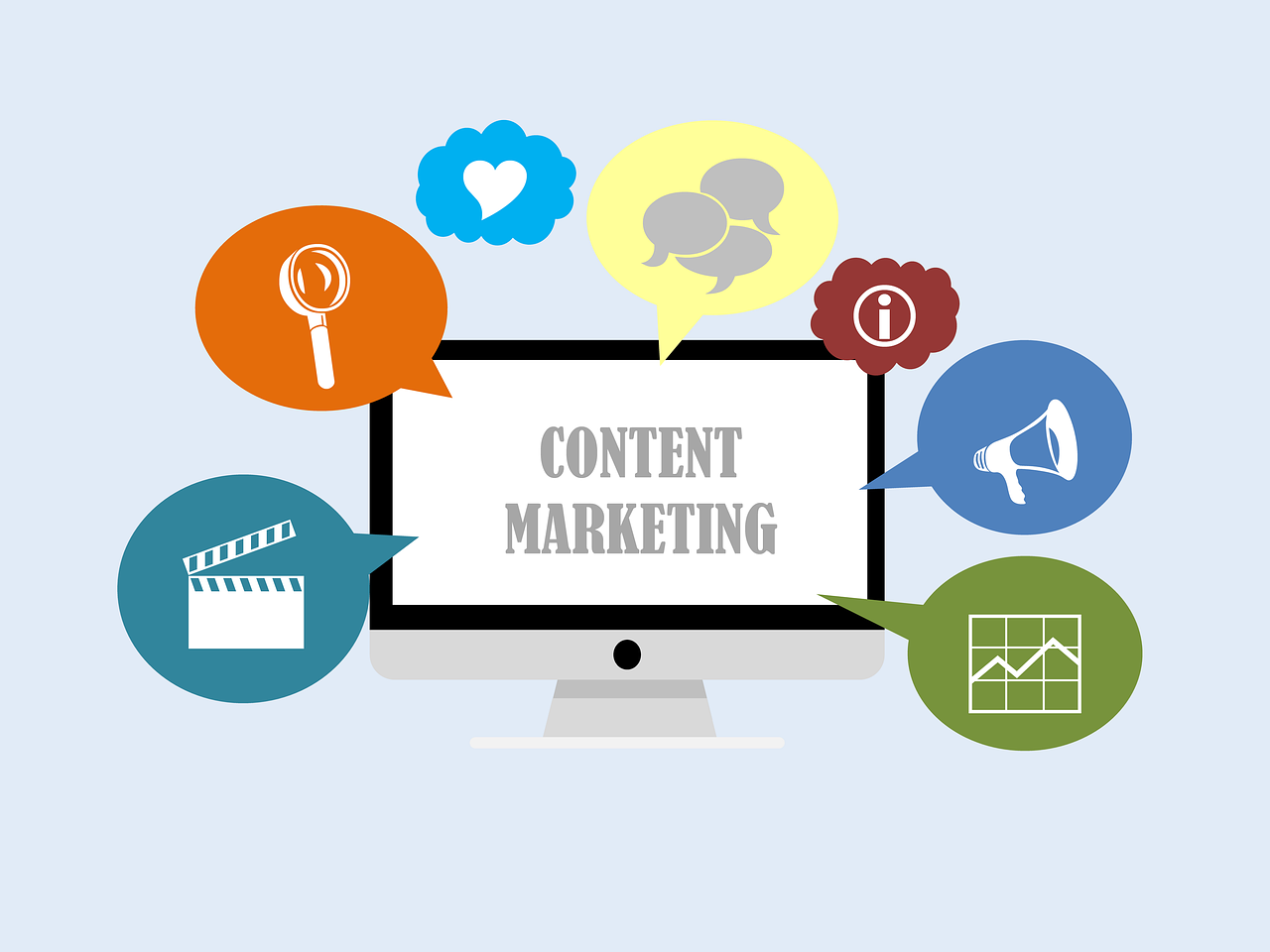Introduction
In today’s digital era, businesses cannot afford to ignore online marketing. Digital marketing has revolutionized the way brands connect with their audience, drive traffic, and generate revenue. Whether you’re a startup, an established business, or a freelancer, understanding digital marketing strategies is crucial for success.
With billions of internet users worldwide, digital marketing provides an unparalleled opportunity to reach potential customers. Unlike traditional marketing methods, digital marketing allows businesses to target specific audiences, measure campaign effectiveness in real-time, and optimize strategies for maximum return on investment (ROI). This comprehensive guide will explore key aspects of digital marketing, including Search Engine Optimization (SEO), Content Marketing, Social Media Marketing, Pay-Per-Click Advertising (PPC), and Email Marketing. Each section will provide insights, examples, and actionable tips to help you craft a winning digital strategy.

1. Search Engine Optimization (SEO)
What is SEO?
SEO, or Search Engine Optimization, is the process of optimizing a website to rank higher on search engines like Google and Bing. The primary goal of SEO is to increase organic (non-paid) traffic to a website by making it more visible to users searching for relevant keywords.
Key SEO Strategies:
- Keyword Research: Identify high-traffic, low-competition keywords that align with your business. Use tools like Google Keyword Planner, SEMrush, or Ahrefs to find relevant search terms.
- On-Page SEO: Optimize titles, meta descriptions, headers, images, and content for better rankings. Ensure your content answers user queries comprehensively.
- Technical SEO: Improve website speed, mobile-friendliness, and site structure. A well-organized website with fast loading times is favored by search engines.
- Backlink Building: Earn high-quality backlinks from authoritative websites in your industry. Quality backlinks signal trustworthiness and relevance to search engines.
- Local SEO: Optimize for local searches by creating a Google My Business profile, acquiring local citations, and managing reviews.
Example:
A small bakery improves its search rankings by optimizing its website with local keywords like “best cupcakes in New York.” Within six months, they see a 70% increase in website traffic and a 30% increase in in-store visits.
Advanced SEO Trends:
- Voice Search Optimization: With the rise of smart assistants, optimizing for conversational queries is essential. Use natural language and long-tail keywords to capture voice search traffic.
- AI & Machine Learning: Google’s AI algorithms, such as RankBrain and BERT, prioritize user intent and content relevance. Creating high-quality, relevant content is key.
- Mobile-First Indexing: Ensure your website is mobile-friendly as Google predominantly uses the mobile version of your site for ranking and indexing.

2. Content Marketing
What is Content Marketing?
Content marketing focuses on creating valuable, relevant, and consistent content to attract and engage a clearly defined audience. It aims to educate, entertain, or solve problems for potential customers rather than directly selling to them.
Key Content Strategies:
- Blogging: Regularly publish informative and engaging articles. Optimize posts for SEO and provide real value that addresses customer pain points.
- Video Marketing: Use tutorials, explainer videos, product demonstrations, and behind-the-scenes content. Video content has high engagement potential and is shared widely.
- Infographics: Present complex data in a visually appealing manner to make information more digestible and shareable.
- Podcasts: Share industry insights, expert interviews, and customer stories to engage audio-focused audiences.
- E-books & Whitepapers: Create in-depth guides, case studies, or industry reports to generate leads and establish authority in your niche.
Example:
A software company launches a blog series on “How AI is Transforming Businesses”, incorporating SEO-friendly content. Within three months, organic traffic increases by 50%, and the company generates 200+ high-quality leads.
Emerging Content Marketing Trends:
- Interactive Content: Polls, quizzes, and surveys not only engage but also provide valuable insights into customer preferences.
- AI-Generated Content: AI tools such as GPT-3 can assist with content creation, saving time while ensuring high-quality output.
- User-Generated Content: Encouraging customers to share their experiences strengthens brand credibility and fosters community.

3. Social Media Marketing
What is Social Media Marketing?
Social media marketing involves leveraging platforms like Facebook, Instagram, Twitter, LinkedIn, and TikTok to promote a brand, engage with audiences, and build customer relationships.
Key Social Media Strategies:
- Consistent Posting: Maintain a content calendar to ensure regular, timely, and relevant posts. Consistency keeps your audience engaged.
- Engagement: Respond to comments, messages, and mentions to foster relationships. Engaged followers are more likely to become loyal customers.
- Influencer Marketing: Collaborate with industry influencers to expand brand reach and credibility. Influencers can help build trust and generate buzz.
- Paid Advertising: Utilize targeted ads on platforms like Facebook and Instagram to reach the right audience at the right time.
- Live Videos & Stories: Use real-time content to showcase behind-the-scenes moments, host Q&A sessions, and increase interaction.
Example:
A fashion brand partners with Instagram influencers for a seasonal campaign. Through engaging visuals, product giveaways, and discount codes, the brand achieves a 70% increase in online sales and a 40% growth in followers.
Future Trends in Social Media Marketing:
- Short-Form Video Dominance: TikTok and Instagram Reels are reshaping content consumption. Brands should prioritize engaging, bite-sized video content.
- Augmented Reality (AR) Experiences: Brands are creating interactive campaigns with AR filters, allowing users to try products virtually.
- AI Chatbots: Automating customer interactions via AI chatbots can improve customer service and response times, providing personalized experiences.
4. Pay-Per-Click Advertising (PPC)
What is PPC?
PPC is a model where advertisers pay a fee each time someone clicks their ad. Google Ads and social media ads are the most popular PPC platforms, offering businesses a way to reach highly targeted audiences quickly.
Key PPC Strategies:
- Google Ads: Use search and display ads to target users actively looking for products or services. Optimize ad copy and keywords for maximum impact.
- Social Media Ads: Run campaigns on platforms like Facebook, Instagram, and LinkedIn to drive brand awareness and conversions.
- Retargeting: Show ads to users who have previously visited your website but didn’t convert. This tactic helps bring them back and increase the likelihood of sales.
- A/B Testing: Experiment with different ad copies, headlines, and visuals to identify the most effective combinations.
- Landing Page Optimization: Ensure landing pages are designed with clear CTAs and optimized for mobile to increase conversion rates.
Example:
A travel agency runs a Google Ads campaign targeting “affordable honeymoon packages.” With optimized ad copy, targeted keywords, and compelling visuals, they achieve a 300% return on ad spend (ROAS) within three months.
5. Email Marketing
What is Email Marketing?
Email marketing involves sending targeted messages to a list of subscribers to nurture leads, build relationships, and drive conversions. It remains one of the most cost-effective digital marketing channels.
Key Email Strategies:
- Personalization: Use recipient names and tailor content based on behavior, preferences, or previous interactions.
- Automation: Set up automated email sequences, such as welcome emails, abandoned cart reminders, and follow-ups, to engage subscribers at the right time.
- Segmentation: Divide your subscriber list into groups based on demographics, behavior, and engagement levels to send more relevant messages.
- Engaging Subject Lines: Craft compelling subject lines to improve open rates and engagement.
- Call-to-Action (CTA): Encourage recipients to take action, whether it’s making a purchase, signing up for a webinar, or downloading a resource.
Example:
An e-commerce store implements a cart abandonment email sequence, reminding users to complete their purchases. This results in a 20% recovery in lost sales and a 15% increase in customer retention.
Conclusion
Digital marketing is an ever-evolving field, and businesses that adapt to emerging trends and technologies will thrive. By integrating SEO, content marketing, social media, PPC, and email marketing, brands can maximize their reach, engage their audience, and drive sustainable growth.
Start implementing these strategies today and watch your business flourish in the digital world!
